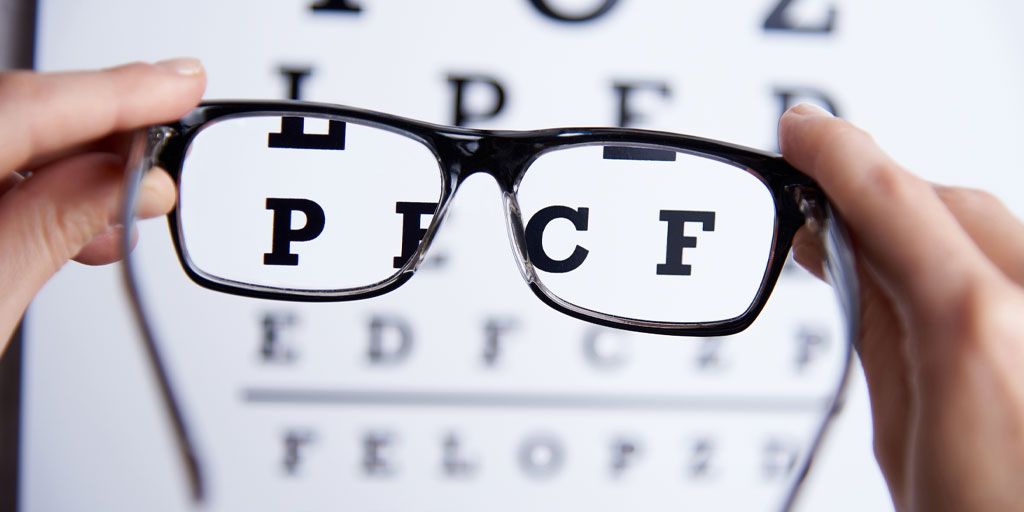How Do I Know If I Have Low Vision?

People commonly use the term low vision to mean that their vision is not perfect (less than 20/20). However, there is a difference between less than perfect vision and the clinical definition of low vision.
If your eye doctor in West Florida informs you that you have low vision, they are likely referring to a condition that has reduced your vision significantly. If you believe that you have low vision, you should schedule a low vision eye exam immediately to identify the problem and to get treatment. Any delay in treatment could cause your problem to deteriorate.
What Is the Clinical Definition of Low Vision?
According to eye doctors, low vision results from reduced visual acuity or an impaired visual field. At this stage, the condition has deteriorated so severely that glasses, contact lenses or surgery cannot correct the problem. Admittedly, there is no widely accepted definition of vision impairment. Vision impairment can range from mild vision loss (partially sighted) to severe vision loss or even total blindness.
What Causes Low Vision?
Eye diseases are a common cause of low vision, and many of these have no early symptoms. Regular eye exams checking for early warning signs of serious eye concerns, and other health issues, are important. Between exams, it is important to let your eye care professional know if you notice any changes in your vision or if your eye becomes injured. There are a wide variety of causes of low vision, including:
- Macular degeneration
- Diabetes/Diabetic retinopathy
- Glaucoma
- Cataracts
- Retinitis pigmentosa
- Inherited diseases
- Eye injuries
Common Symptoms of Low Vision
A thorough eye examination is needed to diagnose the causes of low vision. You may have low vision if you experience the following symptoms:
- Loss of central vision
- Night blindness
- Loss of peripheral vision
- Blurred vision
- Hazy vision
How to Use Visual Acuity to Assess Vision
Visual acuity is a measurement that indicates the sharpness or clarity of your vision. For instance, a visual acuity measurement of 20/70 means that a person who is 20 feet from an eye chart sees what a person with unimpaired (or 20/20) vision can see from 70 feet away.
Legal blindness is often defined as having a visual acuity of 20/200 or worse or having a visual field diameter of 20 degrees or less. This definition was established to help determine eligibility for vocational training, rehabilitation, schooling, disability benefits and tax exemption programs. More specifically, the visual acuity scale looks like this:
- Visual acuity between 20/40 and 20/63 is mild vision impairment.
- Visual acuity between 20/80 and 20/160 is moderate visual impairment.
- Visual acuity worse than 20/200 is severe visual impairment (low vision).
Your eye doctor uses multiple eye exams to assess your damage and to determine which visual acuity range your eyes are in.
How Do Eye Doctors Evaluate Low Vision?
A low vision evaluation involves more than just looking at a chart or testing your visual acuity. It is a comprehensive exam where an eye doctor gathers information and assesses several aspects of your sight. The exam may include the following:
Health and Medication History
Your eye doctor will gather your medical history and assess your overall health. They may look at your current medication(s) and ask questions about your family's medical history or any current health conditions you may have.
Eye Health Evaluation
The doctor will examine the external parts of your eyes, including:
- Shape of your pupils and how they react to light
- Eyelids and surrounding tissues
- Eye muscles
- Tear ducts
- Cornea
Dilated Internal Examination
Special eye drops will dilate your pupil, which then allows the doctor to look through your enlarged pupil opening and observe the inner parts of your eye, such as the retina and optic nerve. Your doctor may also perform an optical coherence tomography (OCT) test, which produces a high-resolution cross-sectional image of the retina.
Visual Acuity Test
Your doctor will use specialized low vision eye charts different from the eye charts used in a regular eye examination. These special charts contain different-sized letters and numbers to determine the sharpness or clarity of both your near and far vision.
The Amsler Grid Test
Your doctor may also use the Amsler Grid test to check for the presence of macular degeneration or diabetic retinopathy. The Amsler Grid test looks like white graph paper with dark horizontal and vertical lines that form a square grid. Wavy, distorted, missing or broken lines, holes or black spots in the grid can indicate eye problems that require further monitoring.
Visual Field Testing
A visual field test determines how much peripheral vision you have and the surrounding area you can see. Your eye doctor will perform a visual field measurement test using a computerized visual field analyzer, such as the Humphrey Visual Field Analyzer, or a non-computerized visual field test, such as the tangent screen or the Goldmann Perimeter Exam.
Schedule an Eye Exam Today
Contact Gulf Coast Vision Center today at one of our Pace, Milton, Crestview or Pensacola locations to schedule a comprehensive eye exam.
